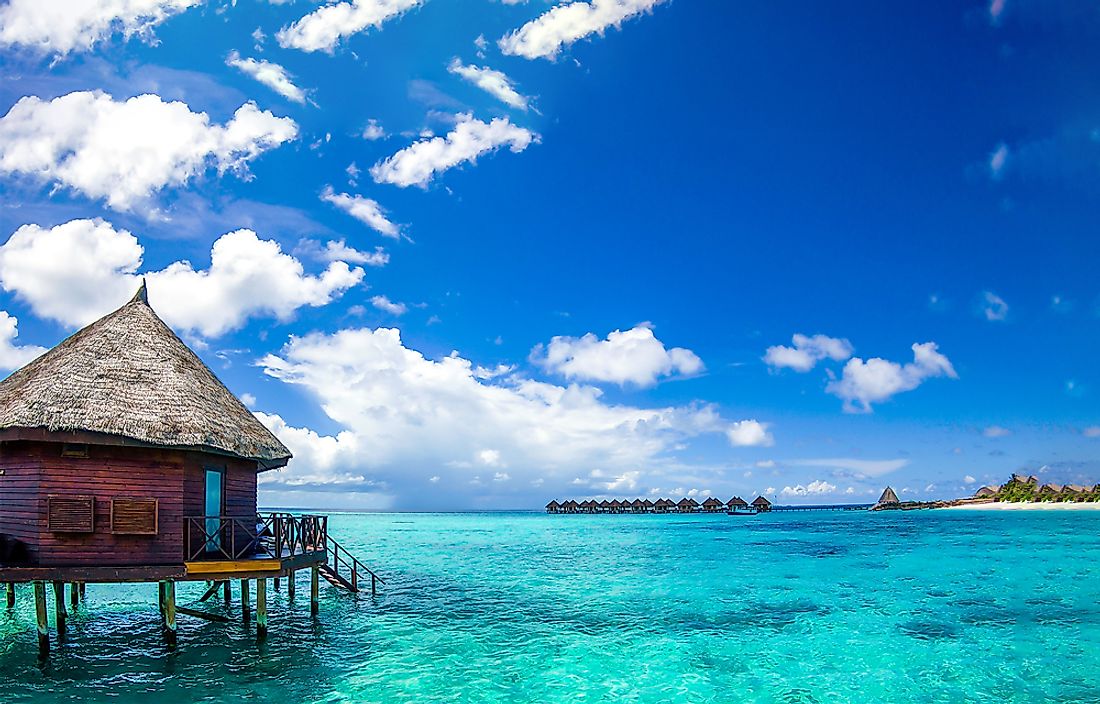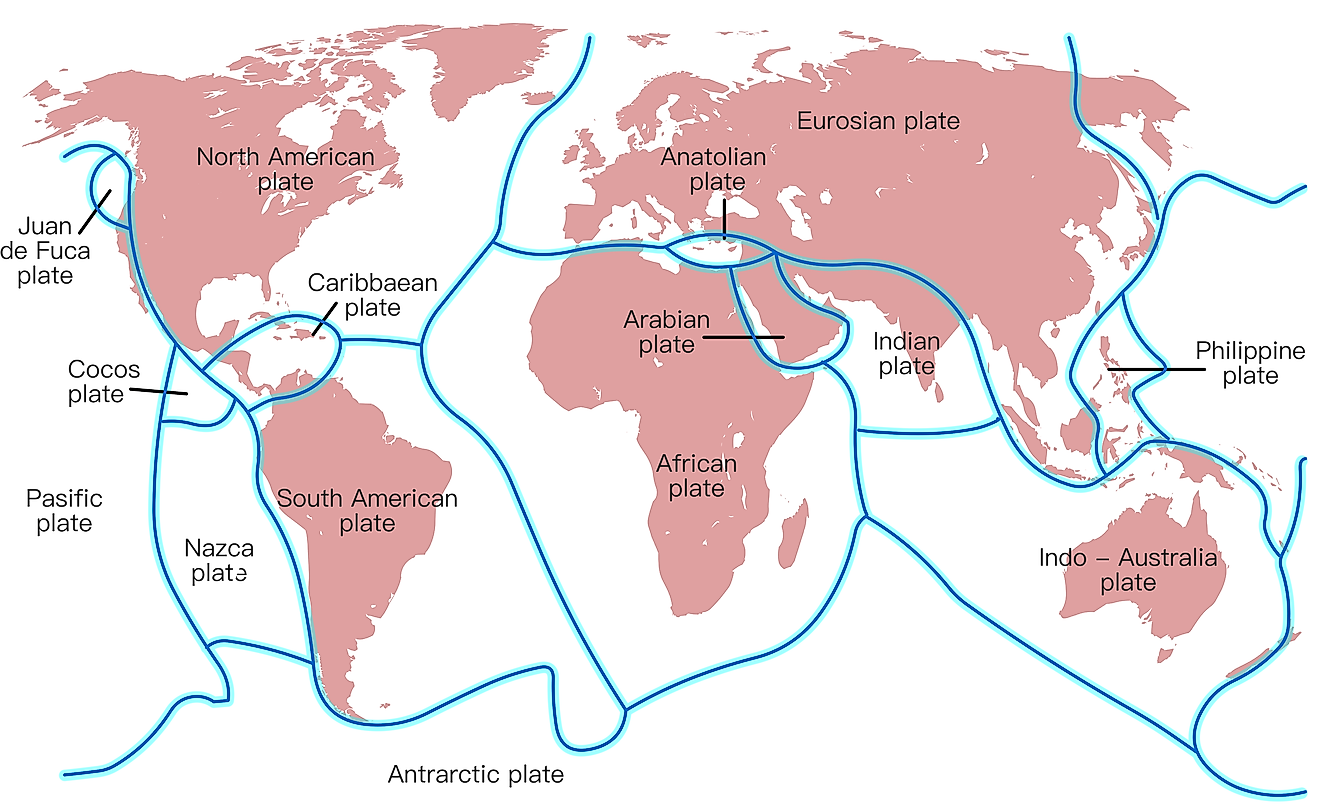What Is An Abyssal Plain?
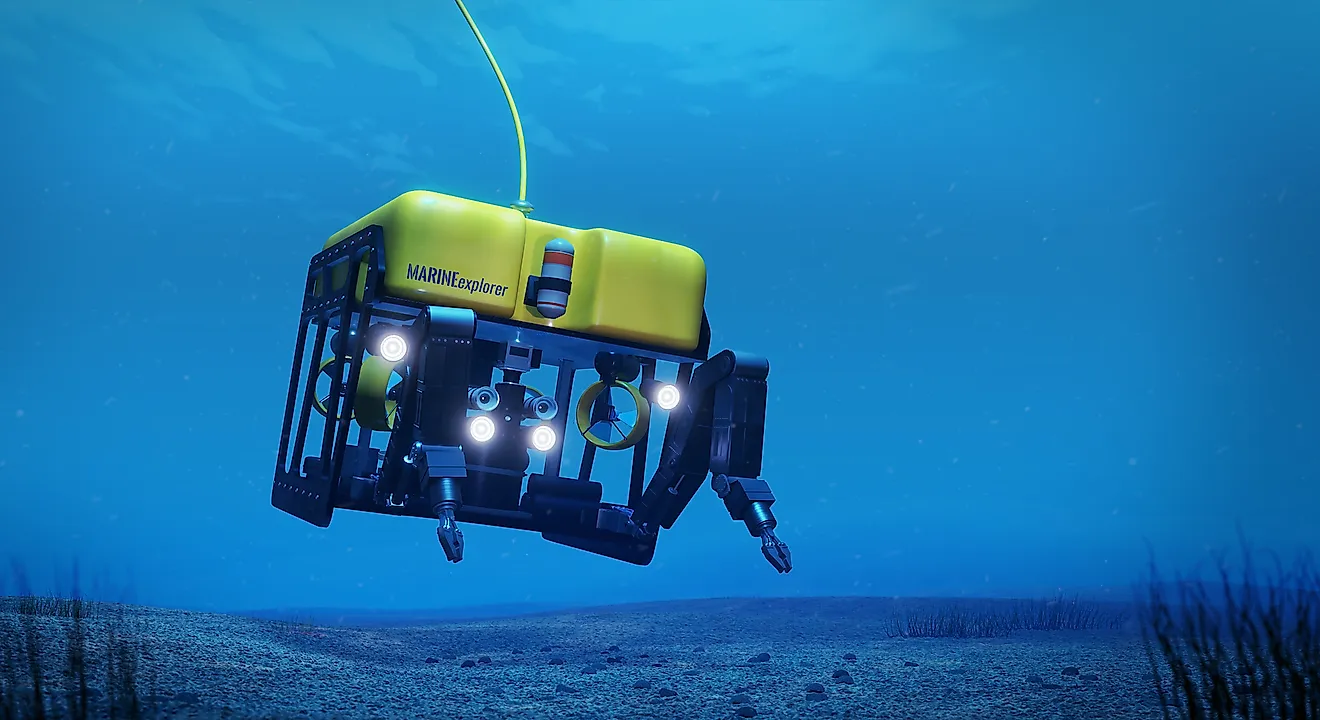
- Abyssal plains occur on the bottom of a seabed from roughly 10,000 to 20,000 feet below sea level.
- The majority of the world's abyssal plains are found within The Atlantic Ocean, although they are in all seas on Earth.
- Abyssal plains are made up of silt, sediment and sand that blankets the original ocean floor, forming a smooth, flat plain.
Though plains usually bring to mind wide open pastures, prairies, deserts or grasslands, there is another type of plain that we don’t as often think of, and that is the abyssal plain. An abyssal plain is one that occurs underwater. The plains generally occur just along the edge of continents.
Contents:
Description
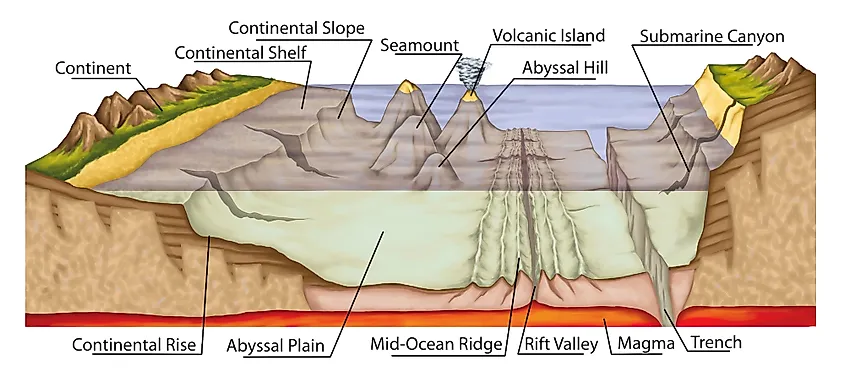
Like other plains, these types are flat expanses of land, but abyssal plains occur on the bottom of a seabed from roughly 10,000 to 20,000 feet below sea level, which is over 3,000 to 6,000 metres. After a continental shelf drops off to the continental slope, it plateaus around 10-20,000 feet into these plains. On the other side of the plain is usually an oceanic trench, where the seafloor dramatically plummets. The plains are almost entirely flat, with very little variation in their elevation. Depth variation is usually only as much as 10 to 100 centimeters per kilometer of horizontal distance. This means that the slope is not only minimal, but dependent on the expanse of the plain itself. Abyssal plains can range as far as thousands of kilometers, forming huge plateaus beneath the sea.
Formation
The forming of an abyssal plain, like most changes in the Earth’s crust, is linked to tectonic plate movements. The seafloor spreads when the lower oceanic crust melts, due to activity within the Earth's mantle. When the plates spread, it allows magma to rise from underneath, where it begins to cool and form a new oceanic crust. This crust will continue to spread as the process repeats over time. Abyssal plains exist as a sort of blanket, smoothing the rough crust over time on oceanic ridges and sea beds.
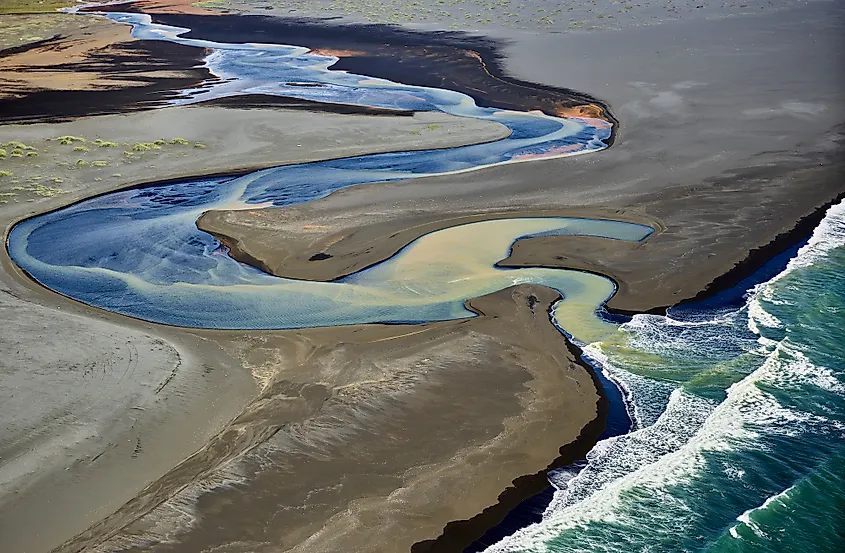
Sediments, silt and natural debris builds up on the ocean floor. These sediments can be anything from clay and volcanic ash; to sand, gravel or silt, as well as organic matter like plant matter, parts of decaying organisms, or microscopic organic matter. Unnatural particles play a part as well, as pollutants such as chemical precipitates or debris from nearby continental coastlines can add to the natural silt. As these sediments build up, they create flat or slightly sloped plains which rise from the bottom as they cover over the natural ocean floor. The average thickness of these plains is roughly 1 kilometer. Because they are made of such small particles and tiny debris, this shows how abyssal plains take a significant amount of time to build up.
Occurence
Abyssal plains are found on the ocean floor, usually off the coast of major continental coastlines. However, there are significantly more abyssal plains in the Atlantic Ocean than in any other. Some can be found within the Indian Ocean, but very few exist in areas within the Pacific Ocean. Roughly 40 percent of Earth’s sea floor consists of abyssal plains. The rest of the Oceanic crust is made up of valleys, rifts, hills trenches and underwater mountain ranges.
The Sohm Plain
The largest Abyssal plain on Earth is called the Sohm plain. This plain can be found in the North Atlantic Ocean, South of the Canadian Maritime province of Newfoundland, and directly East of the United State’s New England East Coast: Latitude 36° 0' 0" N, Longitude 55° 0' 0" W. This giant Abyssal Plain is 900,000 square kilometres, which is equal to 350,000 sq miles.
The Colombian Abyssal Plain
Another example of one of Earth’s large abyssal plains, is the Colombian Abyssal Plain. The Colombian plain is extremely flat, with a very gradual slope, and reaches depths as great as 14,260 feet, which is equivalent to roughly 4,350 metres. This is located in the south-central Caribbean sea, within the Colombian Bain, north-west of the Coloumbian coastline. It joins the Clark Basin and the continental shelf of Central America, but is separated from the Venezuelan Basin by the Beta Ridge.
Ecology
While there was once little known about the types of life - if any - that inhabited the Earth’s sea floors, scientists have now come to understand more and more about creatures and organisms that live in areas once thought to be uninhabited. Abyssal plains have a high level of biodiversity, in terms of microbial life.
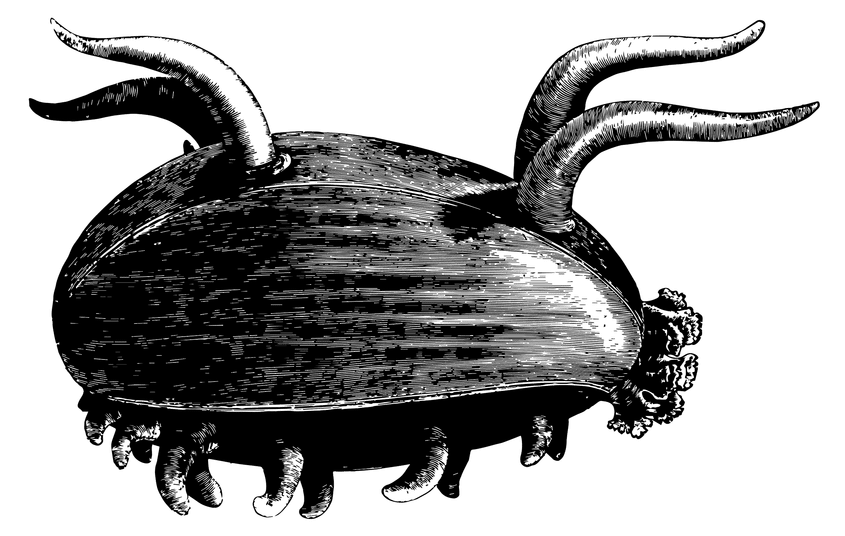
A huge variety of tiny organisms have been discovered in and around abyssal plains, in what were initially thought to be relatively barren landscapes. Some 2,000 different bacteria, 250 protozoan, and another 500 invertebrate species have all been recorded in abyssal plains. It has been difficult to track organisms in this area, due to the sheer depth of the plains themselves. The animals and organisms that do live in these regions generally both feed on and live within this abundance of debris, making them even harder to find and observe. In many cases, it is only possible to see signs of them by spotting their trails, tunnels or burrows. These types of creatures remain buried beneath the sandy, muddy surface and feed through siphons, which they stick out of these feeding tunnels into the open ocean above. There are, however, some organisms which can be seen moving along the surface of abyssal plains. These organisms will also feed on sediments, but move about more freely. They include types of worms, molluscs and echinoderms - a phylum which includes creatures such as starfish, sea cucumbers, urchins, and related species.
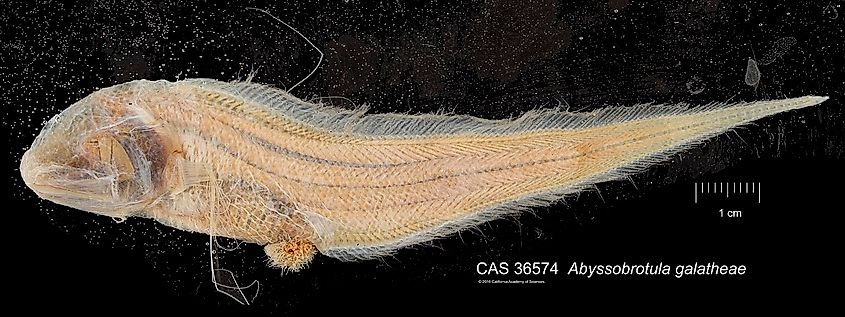
As far as larger organisms are concerned, the Abyssobrotula galatheae - as the name might suggest - is found in abyssal zones. While it does not necessarily live on the surface of the plain itself, it is one of a handful of the deepest living fish (in this case from the eel family) known to humans.
Significance And Threats
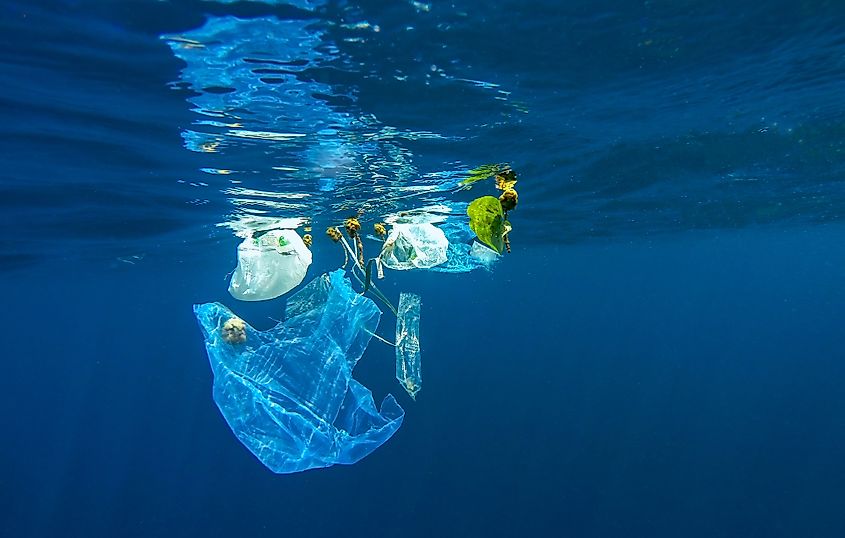
In the past, Abyssal plains were not well understood, and certainly not found to be of any use to humans. However, in more recent times, the possibilities have expanded. Along with increased exploration and research, a greater understanding of these plains has opened up new avenues. Oil rigs have generally not reached the depths of abyssal plains, but as the Earth’s resources continue to be depleted, exploration into deep sea rigs is growing, Not only may this disturb the natural ecosystems and geographic landscape of the world’s seabeds, it poses the danger of potential oil spills and ocean pollution.
Also of interest are the large deposits of minerals which can be found within the mud and silt of abyssal plains. These minerals, namely iron, manganese, copper, cobalt and nickel, are of significant commercial value. Mining for these minerals, while financially beneficial, will cause mass disruption to the sea biomes, as well as pose issues of legal jurisdictions and rights to resources.
Another dangerous idea that has been linked to abyssal plains and deep sea ridges is that of waste dumping. Due to their extreme depths, these plains have been associated with the potential of dumping waste - whether legally or illegally. Everything from oil rigs to hazardous waste could be dumped into these deep sea beds. It may seem like an excellent location for harmful materials - far away from human contact - but the dangers of this practice are still significant. These hazardous materials can easily leak, causing significant levels of pollution, and disrupting or wiping out whole ecosystems, many of which we do not fully understand.










